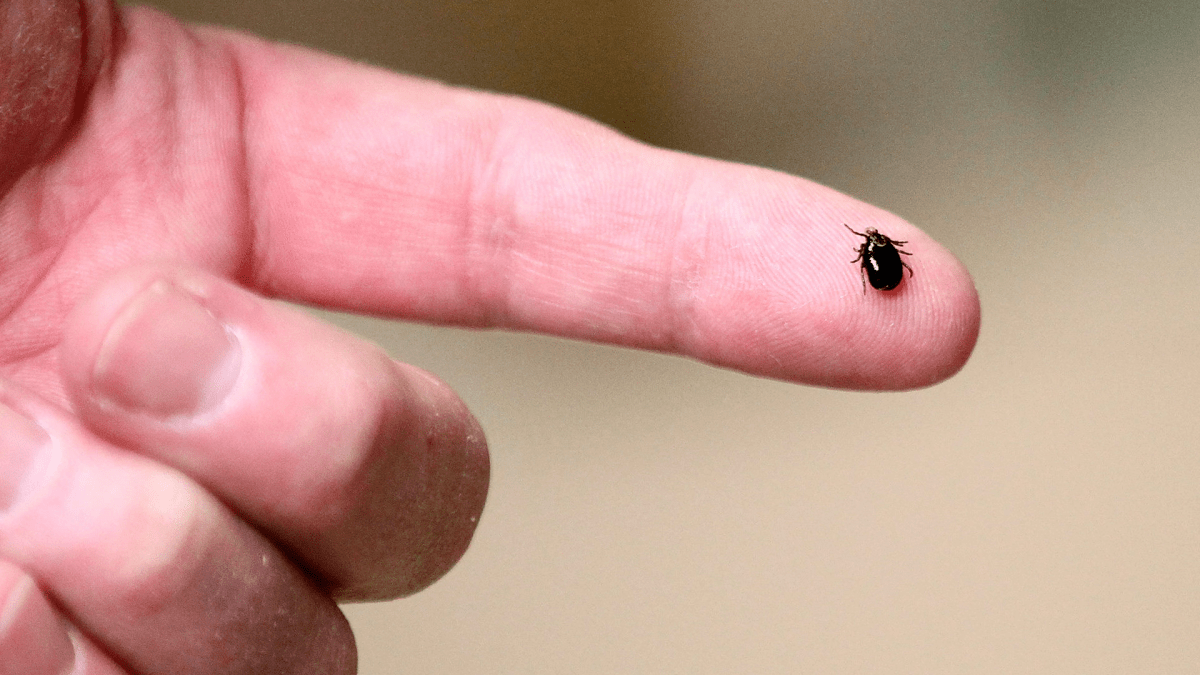Hamilton is still considered a risk area for black-legged ticks and has the potential for residents to contract Lyme disease.

That’s the assessment from Public Health Ontario who’s once again included the city on its latest map demonstrating the estimated risk areas for the affliction.
Hamilton Public Health (HPH) supervisor Jane Murrell says despite the designation, the true risk of infection to residents is very low.
“There is potential for some of those ticks to carry the bacteria that causes Lyme disease but not all black-legged ticks carry that bacteria,” Murrell told Global News.
“So the majority of our ticks in the city are still brown-legged dog ticks, which don’t carry Lyme.”
Still, Hamilton hit a ten year high in 2021 for Lyme disease cases acquired locally with 27 reported to HPH.
It’s a bump of more than 20 cases compared to the previous year (2020) when HPH had just six cases in the city.
Between 2013 and 2021, the city was averaging just over 2 cases per year.
The American dog tick (Dermacentor variabilis) is the most common type of tick in the province and has been known in some cases to transmit bacteria to animals.
Infections in humans from the ticks are very low.
A deer tick (Ixodes scapularis or black-legged tick) is the arachnid that can transmit Lyme disease and the risk for contact with humans typically happens during spring and summer months when it can attach itself to less visible areas of the body, such as hair.
It typically requires wooded and brushy areas to establish themselves, meaning areas with no brush are at low risk for contact.
Ticks can catch rides on migratory birds which is why Ontario, for the most part, is an estimated risk area.
Murrell says of the species, the deer tick is the biggest concern for Hamilton although HPH is keeping an eye out for others that might migrate from southern regions to make a home in the city.
“A lot of health units do a lot of tick dragging twice a year to look for any new (ticks) that might establish themselves like the Lone Star tick,” said Murrell.
“It’s not established in Hamilton, but, with climate change down the road you never know.”
She says removing a tick should be done carefully with tweezers by grasping it as close to the skin as possible and pulling it “straight out, gently but firmly.”
Squeezing a tick should be avoided as it can cause secretions that can lead to Lyme disease to escape into a person’s body.
Lyme disease is caused by a bacterium called Borrelia burgdorferi, which is spread through the bite of infected black-legged ticks, according to Public Health Canada
Typically, infected black-legged ticks need to be attached for at least 24 to 36 hours in order to transmit the bacteria that causes Lyme disease.
Symptoms can take anywhere from a few days to four weeks to appear. They include fever, headaches and tiredness.
If untreated, the more severe scenarios include joint pain, severe headaches with neck stiffness or heart palpitations.
City to begin larvicide testing for West Nile Virus in June
Hamilton public health is set to start its yearly West Nile Virus (WMV) surveillance in June which will involve larvicide testing in catch basins and standing water.
“Once mosquito populations have established and the weather is warm enough to support that, then we’ll start trapping first week of July until I believe at the end of October,” said Murrell.
“That’s when we would find out if we have any positive pools.”
The first and only case of West Nile for 2021 was revealed by public health last June prompting the agency to move the risk of contracting WNV from low to moderate.
Murrell says testing last year was not interrupted by a reallocation of HPH staff due to the pandemic.
“So our traps were still set. Instead of hiring students to do our trapping during COVID, we hired a third-party contractor,” said Murrell.
While 80 per cent of individuals affected by West Nile virus will have no symptoms, older adults or those with weakened immune systems could see more severe illness including inflammation of the brain or of the lining of the brain.
However, that risk is deemed to be a less than a one per cent chance for most people.
Symptoms, if they do occur, typically appear two to 14 days after being bitten by an infected mosquito.
Local surveillance last year only revealed seven positive mosquito pools for the virus compared to the five-year high of 32 found in 2017.
Rabies risk low despite first Hamilton case revealed in March
Hamilton already has its first rabies case of 2022 after a bat, that bit a resident, tested positive in March.
According to public health, Hamilton had an ongoing outbreak of rabies, with 330 animals testing positive for the virus since December 2015.
The overall risk for the affliction to Hamiltonians however remains low.
There was only a single positive animal test in all of 2021 – a bat. Most cases over the last six years have involved raccoons who account for 215 of the 338 discoveries.
The city’s outbreak was prompted by 199 positive wild animal rabies tests in 2016 with 126 of those tied to raccoons.
Rabies is transmitted through the saliva of an infected animal — usually through a bite, but can also enter the body upon contact, through scratches, open wounds, or mucous membranes of the mouth, nose and eyes.
Residents should stay away from wild animals and call animal services at 905-546-2489 if they see an animal they think might be infected, public health says.
Anyone who may have been bitten by an animal or had direct contact with an animal is advised to wash the wound with soap and water and seek medical attention immediately or call public health at 905-546-2489.









Comments